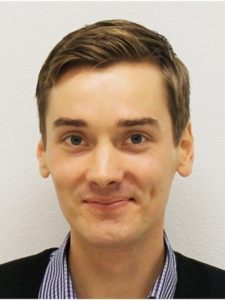Local damage such as stroke lesions in the brain can lead to spontaneous remission from addiction, where patients can easily quit their addictions immediately following injury, with no cravings or relapses.
An international team, including scientists from the U.S. National Institute of Alcohol Abuse and Alcoholism, the Harvard Medical School, and the University of Turku in Finland, have analyzed such spontaneous remissions and mapped affected brain regions on the human brain connectome to identify neural targets that can be therapeutically modulated to treat patients suffering from various addictions.
Their findings were published on June 13, 2022, in an article in the journal Nature Medicine “Brain lesions disrupting addiction map to a common human brain circuit.”
Nearly 10% of the global adult human population is afflicted with substance use disorder (SUDs). Addiction is a leading cause of morbidity and mortality in several countries, including the US, particularly among young people, and the need for effective treatments is critical. Brain stimulation provides a promising treatment option, but the lack of specific targets for such treatments limits its efficacy.

First author of the study, Juho Joutsa, MD, PhD, an assistant professor of clinical neuroscience at the University of Turku, senior author of the study, Michael Fox, MD, PhD, director at the Center for Brain Circuit Therapeutics at the Brigham and Women’s Hospital, Harvard Medical School, Boston, and their colleagues, mapped the locations of the lesions to a brain atlas and computed the neural network(s) connected to each location using data from the human brain connectome. This enabled them to identify those neural networks that were associated with spontaneous remission from addiction.
“We analyzed two cohorts of patients addicted to smoking at the time of focal brain damage,” the authors noted. The team analyzed brain scans from 129 patients (60% male; average age of 56 years) addicted to smoking at the time they experienced localized brain damage, of whom 34 experienced spontaneous addiction remission.
Based on a separate group of 186 patients with focal brain damage and alcohol addiction risk scores, the team assessed generalizability, and compared network associations to remission with 37 other neuropsychological symptoms, to compute the specificity of their findings.

They found, lesions in the brain that resulted in spontaneous remission from smoking addiction occurred in different parts of the brain but exhibited a common pattern of neural activity that involved positive connectivity to several regions of the brain including, the dorsal cingulate, lateral prefrontal cortex, and insula and negative connectivity to the medial prefrontal and temporal cortex. This common pattern, the investigators observed, occurred repeatedly in different test groups of patients with reduced alcohol addiction risk.
Neural hubs in the paracingulate gyrus, left frontal operculum, and medial fronto-polar cortex were the best matches for connectivity profiles of addiction remission. “Heterogeneous lesion locations disrupting addiction are characterized by a specific pattern of connectivity and hubs that best capture this pattern provide data-driven, testable targets for therapeutic neuromodulation,” the authors conclude.
The authors point out that targeted modulations of these neural hubs may have side effects. These must be explored and characterized in future studies.



